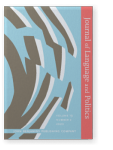Vol. 19:2 (2020) ► pp.226–250
‘Eastern Europe’ in the English-language press in the twentieth century
The term’s different kinds of otherness
The general opinion among scholars is that Eastern Europe is primarily a Cold-War term. Although the connection between Eastern Europe and the Cold War cannot be denied, it must be kept in mind that the term was well known and used much earlier. This article provides a synthetic review and discussion of how the phrase (name, term, concept) Eastern Europe was used in western English-language press in a better part of the twentieth century, from around 1900 to 1988. Drawing on the results of a search of a journalistic database, this study examines how the term Eastern Europe combines with other lexical units in press texts in this time period. The architecture of its use is revealed through a detailed analysis of collocations which the key term prefers in journalistic texts. In its numerous uses, the term triggers the sense of otherness in its different incarnations throughout the twentieth century.
Article outline
- 1.The interdisciplinary background of the multifaceted concept
- 2.Discursive constructions of Europe
- 2.1Western vantage points and perspectives
- 2.2The other Europe
- 3.The methodological approach
- 3.1English-language written press discourse
- 3.2The sources of the data
- 3.3The analytical framework
- 4.The analysis
- 4.1Quantitative analysis
- 4.2Qualitative analysis
- 5.Conclusions
- Acknowledgements
-
References
